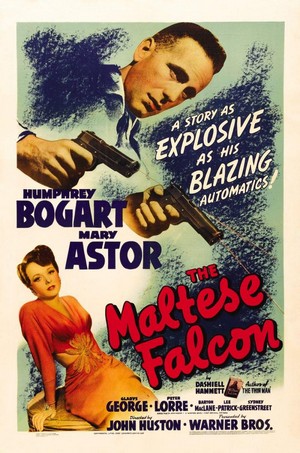
The Maltese Falcon (1941)
Maltezer Valk

Raiting: ![]() 8,1 /10
8,1 /10
Genre: Filmnoir
Director: John Huston
Stars: Humphrey Bogart, Mary Astor and Peter Lorre
Country: United States
Release date: 18 October 1941
Length: 99 minutes


Raiting: ![]() 8,1 /10
8,1 /10
Genre: Filmnoir
Director: John Huston
Stars: Humphrey Bogart, Mary Astor and Peter Lorre
Country: United States
Release date: 18 October 1941
Length: 99 minutes